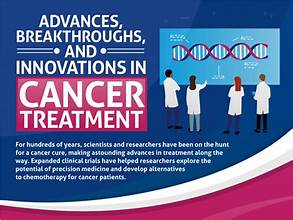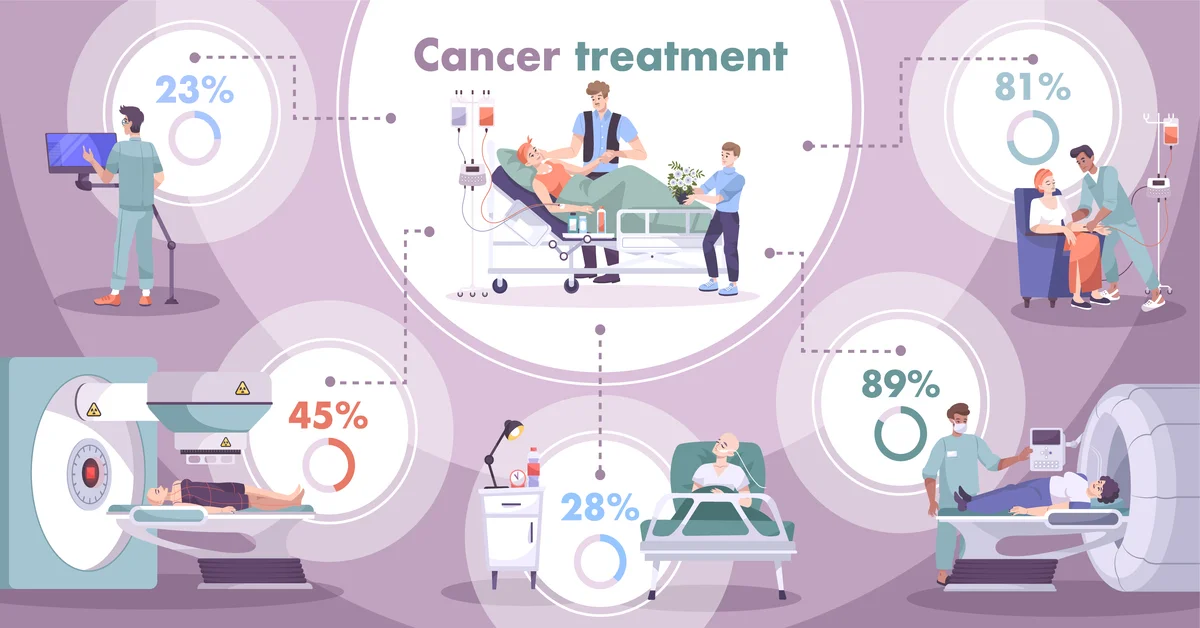
Cancer remains one of the most formidable health challenges of our time, but recent breakthroughs in treatment are revolutionizing patient outcomes and offering new hope. As research and technology evolve, these advancements are shifting the landscape of oncology, improving survival rates, and enhancing the quality of life for cancer patients. This article explores the latest innovations in cancer treatment and their impact on patient care.
1. Immunotherapy: Harnessing the Body’s Own Defenses
Immunotherapy represents one of the most significant advancements in cancer treatment. By leveraging the body’s immune system to target and destroy cancer cells, immunotherapy has shown remarkable success in treating various types of cancer. Key developments include:
- Checkpoint Inhibitors: These drugs block proteins that prevent immune cells from attacking cancer cells. Notable examples include pembrolizumab (Keytruda) and nivolumab (Opdivo), which have been effective in treating melanoma, lung cancer, and other malignancies.
- CAR-T Cell Therapy: This innovative treatment involves modifying a patient’s T cells to recognize and kill cancer cells. CAR-T therapies, such as Kymriah and Yescarta, have been groundbreaking for treating certain blood cancers, including acute lymphoblastic leukemia (ALL) and non-Hodgkin lymphoma.
2. Targeted Therapy: Precision in Treatment
Targeted therapy aims to specifically attack cancer cells based on their genetic and molecular characteristics, minimizing damage to healthy cells. This approach has led to several advances:
- Tyrosine Kinase Inhibitors (TKIs): Drugs like imatinib (Gleevec) target specific enzymes involved in cancer cell growth, particularly in chronic myeloid leukemia (CML) and gastrointestinal stromal tumors (GISTs).
- Monoclonal Antibodies: These lab-made molecules, such as trastuzumab (Herceptin), bind to specific cancer cell proteins, helping to inhibit tumor growth and enhance immune response.
3. Personalized Medicine: Tailoring Treatment to the Individual
Personalized medicine involves customizing cancer treatment based on an individual’s genetic makeup and the genetic profile of their tumor. Advances include:
- Genomic Profiling: Techniques such as next-generation sequencing (NGS) enable detailed analysis of tumor DNA, identifying mutations that can be targeted with specific drugs. This approach helps in selecting the most effective treatment and predicting potential resistance.
- Liquid Biopsies: These non-invasive tests detect cancer-related genetic material in blood samples, providing insights into tumor dynamics and treatment response without the need for traditional tissue biopsies.
4. Advances in Radiation Therapy: Precision and Efficiency
Radiation therapy has also seen significant progress, enhancing its effectiveness while reducing side effects:
- Stereotactic Radiosurgery (SRS): SRS delivers high doses of radiation with pinpoint accuracy, targeting tumors with minimal impact on surrounding healthy tissue. It’s particularly useful for brain tumors and metastases.
- Proton Therapy: This advanced form of radiation therapy uses protons instead of X-rays to target tumors, offering precise treatment with reduced risk of damage to surrounding organs and tissues.
5. Novel Drug Delivery Systems: Enhancing Efficacy
Innovative drug delivery systems are improving the way treatments are administered and absorbed:
- Nanoparticles: Tiny particles can be engineered to deliver drugs directly to cancer cells, increasing the effectiveness of chemotherapy and reducing systemic side effects.
- Smart Drug Delivery: This approach involves developing drugs that activate only in the presence of specific tumor markers, allowing for targeted treatment and minimizing off-target effects.
6. Advances in Cancer Surgery: Minimally Invasive Techniques
Surgical techniques have evolved to offer less invasive options, reducing recovery times and improving outcomes:
- Robotic-Assisted Surgery: Robotics allow for highly precise surgical procedures with smaller incisions, leading to quicker recovery and less postoperative pain.
- Enhanced Imaging Techniques: Innovations in imaging, such as intraoperative MRI and fluorescence-guided surgery, help surgeons better visualize and remove tumors while preserving healthy tissue.
7. Supportive Therapies: Improving Quality of Life
Supporting therapies play a crucial role in cancer treatment by managing symptoms and improving overall well-being:
- Palliative Care: This holistic approach addresses physical, emotional, and psychological aspects of cancer care, helping patients manage symptoms and enhance their quality of life.
- Nutritional Support: Personalized nutritional plans and interventions help patients maintain strength and resilience throughout their treatment journey.
Conclusion
The field of oncology is experiencing an era of unprecedented innovation, with new breakthroughs transforming cancer treatment and patient care. From immunotherapy and targeted treatments to personalized medicine and advanced surgical techniques, these advancements are not only improving survival rates but also enhancing the overall quality of life for patients. As research continues to progress, the future of cancer treatment holds even greater promise, offering hope and optimism to millions affected by this challenging disease.









